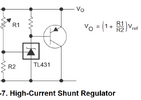Hi there. Some lithium tool batteries have a tendency to go out of balance over long periods, such as Milwaukee's notorious HD 9.0 and 12.0 batteries (the ones I have). They don't have built in cell balancing (even though they have hardware for it), so I'm trying to think about ways to add it. I've seen some people add balance leads for an external balance charger, but I'd rather find a way to add internal balancing so I can keep using my Milwaukee chargers. However I haven't found any balancing boards that are quite small enough to fit inside the existing case. So first question is: does anyone know of any very small (even if very low current and passive) balance boards? Like 15mmx20mm or smaller, and thin. If not, my other idea is to design one using 4.1V zener diodes with 10ohm resistors to create a sort of pseudo-balance board so as they charge up, if they're out of balance, the highest ones will slowly drain to allow the lower ones to catch up. Should this theoretically work the way I am expecting, or am I missing something about circuit design? Thanks!
Also if there happens to be anyone with experience designing circuit boards who's willing to help me design one like what I just mentioned with the diodes, that would be super cool.
Also if there happens to be anyone with experience designing circuit boards who's willing to help me design one like what I just mentioned with the diodes, that would be super cool.



